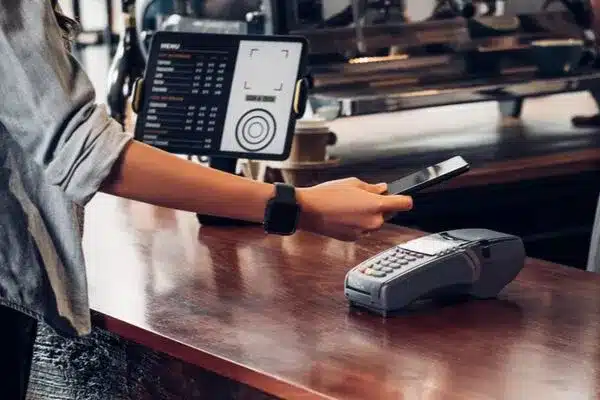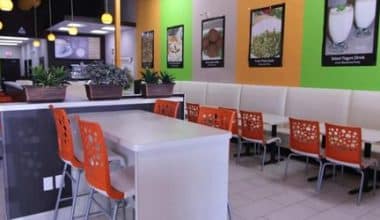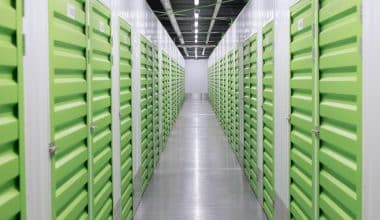Point of Sale (POS) systems are essential tools for any restaurant looking to improve its operational efficiency and enhance the overall customer experience. In today’s fast-paced world, customers expect a quick and seamless experience when dining out, and a reliable POS system can make all the difference. In this article, we will explore the popular best cheap POS systems for restaurants, as well as the cost, and what features to look for when choosing the right one.
Best POS Systems for Restaurants
There are many POS systems available on the market, and choosing the right one for your restaurant can be a daunting task. To help you make an informed decision, we’ve compiled a list of some of the popular best POS systems for restaurants:
#1. Toast
Toast is one of the popular POS systems for restaurants that offers an all-in-one solution for managing orders, payments, and inventory. Its user-friendly interface and powerful features, such as menu management, reporting, and analytics, make it a top choice for many restaurant owners.
Toast was designed specifically for restaurants and is compatible with all varieties, including food trucks, hotel restaurants, fine dining, casual dining, fast casual, bars, nightclubs, pizza places, cafes, and bakeries (at the enterprise level). To access a digital menu and make an order with Toast, customers simply scan a QR code.
Additionally, Toast integrates with well-known third parties like Uber Eats, DoorDash, and RASI. Due to this, restaurant owners may control all parts of their operations from a single location. It offers a free plan, and paid subscriptions begin at $69 per month.
#2. Square
Square is a versatile POS system that can be used by businesses of all sizes, including restaurants. Its intuitive interface and affordable pricing make it a great option for small to medium-sized restaurants. Square also offers features such as online ordering and delivery management, making it an all-in-one solution for restaurant owners.
A small restaurant needs a variety of other tools and services that Square provides in addition to its POS functionality to be successful. In addition to marketing and team management solutions, these also offer payroll and loyalty plans. Square offers continuing assistance and resources to help restaurants develop and prosper with 24/7 support, an online support center, and one-on-one implementation services. It is also simple to use and simple to set up because of its user-friendly interface and selection of hardware compatibility options.
#3. Revel
Revel is a cloud-based POS system that offers features such as inventory management, customer management, and reporting. It also offers integrations with other restaurant tools, such as online ordering and delivery management software. Integration with third parties is simple thanks to its open API.
With the purchase of two terminals and the execution of a three-year contract, Revel plans begin at $99 per month (per terminal). You must submit a price request form to receive pricing for a single terminal without binding agreements.
#4. Clover
The Clover POS system is ideal for quick-service restaurants. Features including shift management, table management, internet ordering, and gift card processing are available. Restaurants can interface with third-party applications like Adentro, QuickBooks, NEXT Insurance, Gusto Payroll, and Time Clock through the Clover app store.
Quick-service Color-coded menu items enable eateries to provide simple ordering. While the order is already in line for the kitchen, customers can pay via contactless mobile devices, gift cards, cheques, credit cards, and debit cards.
#5. Lightspeed
Lightspeed is a cloud-based POS system that offers robust features such as table management, menu customization, and employee management. It also offers mobile access, making it a great option for restaurants with outdoor seating or for managing takeout orders.
It has features including online ordering, gift cards, loyalty programs, and table management. Restaurant operators can combine accounting, e-commerce, HR, and marketing applications through the Lightspeed app store. Customers are now able to make payments via gift cards, contactless mobile payments, Apple Pay, and Google Pay. These features make it one of the popular POS systems for restaurants.
#6. TouchBistro
The all-inclusive restaurant management system TouchBistro assists establishments with inventory management, menu design, customer tracking, and floor management. In order to upsell and cross-sell to customers, it also contains a built-in CRM system.
Popular third parties including QuickBooks, FreshBooks, MailChimp, and Google Analytics are integrated with the software. Additional services are available as add-ons to TouchBistro plans, which start at $69 per month. These consist of reservation systems, gift cards, marketing, online ordering systems, and loyalty programs.
#7. Aloha
Aloha is one of the popular POS systems for restaurants that offers features such as menu management, reporting, and employee management. It also offers integrations with other restaurant tools such as accounting software, making it a comprehensive solution for restaurant owners.
#8. SkyTab
SkyTab is a cost-efficient and complete point-of-sale option for tableside restaurants. It provides free installation and round-the-clock support, a lifetime hardware guarantee, no-cost office supplies, maintenance and servicing fees, credit card processing, no early termination penalties, and a one-year merchant services agreement. It also incorporates an online ordering option into the monthly fee, enabling restaurants to accept online orders through a website bearing their branding and having those orders connected to the POS system.
Cost of Pos Systems for Restaurants
The cost of POS systems for restaurants can vary widely depending on the size of your business, the features you need, and the type of POS system you choose. The typical price ranges from $500 to $1,500. While the software systems could range from $60 to $250 per month. Some POS systems charge both monthly subscription fees and transaction fees.
Here are some factors that can affect the cost of a POS system:
Hardware Costs:
The hardware cost required for POS systems for restaurants can include a touchscreen display, cash drawer, credit card reader, and printer. The cost of this hardware can range from a few hundred dollars to several thousand dollars depending on the quality and functionality of the equipment.
Software Fees:
Many POS systems charge a monthly fee for access to their software. This fee can range from $60 to $250 per month, depending on the features included and the size of your business.
Transaction Fees:
Some POS systems charge a fee for each transaction processed through their system. This fee can range from a few cents to a few percent of the transaction amount, depending on the POS system.
Implementation Costs:
Implementing a new POS system can require additional costs such as training, installation, and configuration. These costs can range from a few hundred dollars to several thousand dollars, depending on the complexity of your system.
Maintenance and Support Fees:
Many POS systems for restaurants offer ongoing maintenance and support at an additional cost. This fee can range from a few hundred dollars to several thousand dollars per year, depending on the level of support needed.
In general, the cost of POS systems for restaurants can range from a few thousand dollars to tens of thousands of dollars, depending on the size and complexity of your business. However, many POS providers offer flexible pricing options, including monthly subscriptions and pay-per-use models, which can help reduce upfront costs.
Cheap Pos Systems for Restaurants
While many POS systems for restaurants can be expensive, there are also cheap options available for those on a budget. Here are some of the cheapest POS systems for restaurants:
#1. Square
Square is one of the popular POS systems for restaurants that offers cheap pricing for small to medium-sized businesses. The basic version of Square POS is free, and it charges a small transaction fee for every payment processed. Square also offers add-ons such as loyalty programs and payroll for an additional cost.
#2. ShopKeep
ShopKeep is a budget-friendly POS system that offers a range of features such as inventory management, employee management, and reporting. Its pricing starts at $49 per month per register, and it includes 24/7 customer support.
#3. Loyverse
Loyverse is a free POS system that is specifically designed for small businesses, including restaurants. It offers features such as inventory management, sales reporting, and customer loyalty programs. While it is free to use, it charges a small fee for payment processing. But it is still one of the cheap POS systems for restaurants.
#4. Vend
Vend is a cloud-based POS system that offers affordable pricing and a range of features such as inventory management, reporting, and employee management. Its pricing starts at $99 per month for one register, and it offers a 14-day free trial.
#5. Epos Now
Epos Now is a budget-friendly POS system that offers features such as inventory management, reporting, and employee management. Its pricing starts at $39 per month, and it offers a 30-day free trial.
While there are many POS systems available on the market, finding a budget-friendly option for your restaurant is possible. When evaluating cheap POS systems for restaurants, consider factors such as ease of use, features, and customer support. The above-listed POS systems are some of the cheapest options available and can help you streamline your operations, improve customer experience, and increase profitability.
What system do most restaurants use?
There isn’t one specific POS system that most restaurants use, as each restaurant has different needs and preferences. However, based on industry research and popularity, some of the most commonly used POS systems in the restaurant industry include Toast, Square, and Aloha. These systems are known for their user-friendly interfaces, advanced features, and reliability, making them a popular choice for many restaurant owners. Ultimately, the choice of POS system for a restaurant will depend on its specific needs, budget, and operational requirements.
What are the monthly fees of a POS?
The monthly fees for a POS system can vary depending on several factors, such as the type of system, the number of terminals, and the features offered.
For small to medium-sized restaurants, cloud-based POS systems typically charge monthly fees that can range from $50 to $200 per terminal. These systems offer a range of features such as menu management, order taking, and payment processing. Some systems may offer additional features such as inventory management, employee scheduling, and loyalty programs, which may come with additional fees.
For larger restaurants or those with more complex operations, enterprise-level POS systems may be required. These systems typically have higher monthly fees, which can range from $200 to $500 per terminal. Enterprise-level systems offer more advanced features, such as centralized management of multiple locations, real-time reporting, and advanced inventory management.
It’s important to note that the monthly fee for a POS system may not include other costs such as hardware, installation, and training. Payment processing fees may also apply, which are typically a percentage of the transaction amount.
How to install a POS system in a restaurant?
Installing a POS system in a restaurant involves several steps. Here’s a general overview of the process:
- Determine the system requirements: Before you start the installation process, make sure that your restaurant has the necessary hardware and software requirements to run the POS system. This includes a compatible operating system, sufficient memory and storage, and a stable internet connection.
- Choose the right POS system: Select a POS system that meets your restaurant’s needs and budget. You can compare different systems based on features, pricing, and customer reviews.
- Set up the hardware: Once you have chosen a POS system, install the necessary hardware components such as the terminal, printer, cash drawer, and other peripherals. Follow the manufacturer’s instructions for each component to ensure they are installed correctly.
- Install the software: Next, download and install the POS software on the terminal. Make sure to follow the installation instructions carefully to avoid any errors.
- Configure the system: After the software is installed, configure the system to match your restaurant’s operations. This includes adding menu items, setting up employee accounts, and configuring payment options.
- Train staff: Train your staff on how to use the POS system. Provide them with an overview of the system’s features and functions, and conduct hands-on training to ensure they are comfortable using it.
- Test the system: Before going live, test the POS system to ensure it is functioning correctly. Conduct a test transaction to make sure that orders are being taken, payments are being processed, and receipts are being printed correctly.
- Go live: Once the system has been tested and staff is trained, you can start using the POS system in your restaurant.
What equipment is needed for a POS business?
The equipment needed for a POS (Point of Sale) business will vary depending on the specific needs of the business. However, here are some of the basic components that are typically required:
- POS Terminal: This is the primary device used to run the POS software and manage sales transactions. It can be a desktop computer, tablet, or specialized hardware designed for POS systems.
- Cash Drawer: This is a separate unit that stores cash and coins received as payment from customers.
- Receipt Printer: This is used to print customer receipts for each transaction.
- Barcode Scanner: This is an optional component that can be used to scan product barcodes for faster checkout.
- Card Reader: This is used to process credit and debit card payments from customers.
- Customer Display: This is an optional component that can be used to display the transaction amount to the customer during checkout.
- Kitchen Printer: This is an optional component that can be used to print kitchen tickets for food orders.
- Inventory Scanner: This is an optional component that can be used to scan product barcodes for inventory management.
In addition to the above hardware components, a POS business will also require software that runs on the POS terminal. The software can be cloud-based or installed locally, depending on the business’s needs. Before purchasing equipment, it’s recommended to do research and select a system that fits the specific needs of the business.
What tools do I need to setup a POS business?
Setting up a POS (Point of Sale) business requires a combination of hardware, software, and services. Here are some of the tools you may need to set up a successful POS business:
- POS Software: This is the heart of the POS system, allowing you to manage sales transactions, inventory, and customer data. There are many POS software options available, ranging from simple, low-cost systems to complex enterprise-level solutions.
- POS Hardware: You’ll need hardware such as a terminal, cash drawer, receipt printer, and card reader. You may also need additional hardware such as a barcode scanner, customer display, or kitchen printer, depending on your business needs.
- Payment Processing: You’ll need a payment processing system to handle credit and debit card transactions. This could be a standalone processor or integrated into your POS software.
- Internet Connectivity: Most modern POS systems require an internet connection, so you’ll need a reliable internet service provider to ensure stable connectivity.
- Merchant Account: You’ll need a merchant account to process credit and debit card transactions. You can set up a merchant account with a bank or a third-party payment processor.
- Technical Support: It’s important to have access to technical support for your POS system in case of issues or errors. This could be provided by the POS software vendor, the hardware manufacturer, or a third-party technical support provider.
- Training and Documentation: To ensure your staff can use the POS system effectively, you’ll need to provide them with training and documentation. This could be provided by the POS software vendor, a third-party trainer, or in-house staff.
- Optional Services: Depending on your business needs, you may also need additional services such as inventory management, loyalty programs, or online ordering.
In Conclusion
A POS system is an essential tool for any restaurant looking to improve its operational efficiency and enhance the overall customer experience. By automating many of your manual processes, reducing errors, and providing you with valuable insights into your business, a good POS system can help you increase profitability and grow your business.
When choosing a POS system, look for features that align with your restaurant’s unique needs and goals, and don’t hesitate to seek expert advice to help you make the best choice. We do hope our guide to the popular best cheap POS systems for restaurants, Including cost, and features will help you in making your decision.
Related Articles
- RESTAURANT MANAGEMENT SYSTEM: Guide to Effective Restaurant Management
- BEST POS SYSTEM FOR SMALL BUSINESS: The Best POS Systems for Small Businesses in 2023
- How To Open A Restaurant In 2023: Free Tips & How to Open It with No Money
- The 19+ Best POINT OF SALE SYSTEMS FOR SMALL BUSINESS in 2023 (Updated)
- POS TERMINAL: Definition, Types, Prices & Guide






